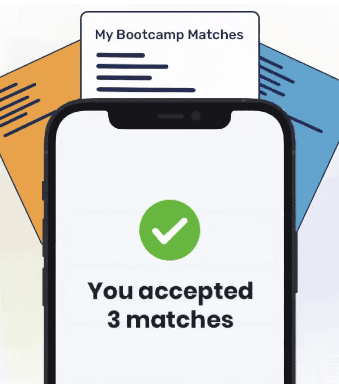Machine learning is a subset of artificial intelligence that gives computers the capability to learn without being instructed. Using data and algorithms, machines gradually learn from experience, similar to the way humans learn. Machine learning is an attractive discipline as it helps organizations make better decisions and identify risks with limited human intervention.
If you are interested in this path, working on machine learning projects is a great way to start. In this guide, find out some unique project ideas in machine learning to develop your skills and put your knowledge into practice. These projects are arranged by difficulty level so it’s easier for you to pick out one that matches your current expertise on the subject.
5 Skills That Machine Learning Projects Can Help You Practice
Machine learning combines computer science, data analysis, and statistics to make predictions. In this discipline, there are a number of skills that you will need to master if you want to become a machine learning engineer or work in this field. Below are the top five skills that you will develop as you work on these machine learning projects.
- Python or Java programming. Python and Java are the common programming languages used in machine learning. Python is the most popular language in machine learning, however, Java is also widespread and it is useful to know as well.
- Data science and data analytics. Data science and analysis are part of machine learning as these skills are used to build models to predict the future performance of a data set. This skill also includes knowing how to interpret the models correctly.
- Mathematics and statistics. Since machine learning involves data analytics, then you will develop your maths and statistics skills. This includes understanding logistic regression, linear regression, and exploratory analysis.
- Software engineering. Software engineering skills include knowing how to write algorithms and understand data structures. These skills mean that you can work on the overall network and computer architecture of a program.
- Database management. Since you are working on data, part of machine learning is also developing skills in database management using SQL.
Best Machine Learning Project Ideas for Beginners
Start with the basics with these fun machine learning project ideas for beginners. Through these projects, you will put your knowledge of basic machine learning concepts to use. Most of these ideas are related to prediction and forecasting, image transformation, and artificial intelligence.
Handwritten Digit Recognition
- Machine Learning Skills Practiced: Software engineering, Python or Java programming
This is a Python machine learning project where your goal is to make a machine recognize a handwritten digit. It makes use of the convolutional neural network deep learning model to make it possible for the machine to identify the digit. It is a project you can use to develop computer vision and applications that have the function of translating handwriting to a digital format.
Fake News Detection
- Machine Learning Skills Practiced: Python or Java programming, software engineering, database management
For this project, you will use machine learning to develop a fake news detector. You will use term frequency and inverse document frequency to collate information and rank the likelihood that specific terms are correct in a given context. This can be used in social media and other online news sites to flag potential false claims.
Sales Forecasting
- Machine Learning Skills Practiced: Python or Java programming, data science and data analytics, mathematics and statistics
In this project, you will develop a machine learning model to predict future revenue using a sales dataset. The sales forecast should clearly show what might happen in the near future, but you can select the frequency such as weekly, monthly, or yearly. This project will help businesses to make decisions based on the data and plan how to use resources efficiently.
Stock Prediction
- Machine Learning Skills Practiced: Python or Java programming, data science and data analytics, mathematics and statistics
Improve the profitability of your trades by developing a stock prediction machine learning model. This project uses neural networks to accurately predict future stock prices based on historical data and to make a dashboard of stock charts. Try to make the model compatible for stocks in popular financial markets and individual analysis of a single market.
Transform Image to Cartoon
- Machine Learning Skills Practiced: Python or Java programming, software engineering
In this project, the goal is to create a facial recognition model that can identify expressions and transform them into an emoji or avatar. You will develop a convolution neural network that will teach the model to recognize certain emotions from a dataset of facial images.
Intermediate Machine Learning Project Ideas
Once you’ve mastered the basic concepts of machine learning, you might be ready to level up and learn more techniques with these intermediate project ideas. This is another round of projects using machine learning and other related skills where you will build programs that have practical applications in a wide range of sectors.
Customer Segmentation
- Machine Learning Skills Practiced: Data science and data analytics, database management
If you’re interested in learning R programming, you can practice with this project to build a customer segmentation model. Using a sales dataset that contains general information about customers and their purchase history, the model will develop a descriptive analysis of the customers that businesses can learn from and use to improve customer satisfaction.
Credit Card Fraud Detection
- Machine Learning Skills Practiced: Data science and data analytics, mathematics and statistics, software engineering
In this credit card fraud detection project, you will develop a model using machine learning and R programming that identifies suspicious credit card transactions. You will use popular machine learning algorithms such as artificial neural networks and statistical techniques such as a logistic regression model.
Music Genre Classification
- Machine Learning Skills Practiced: Python or Java programming, software engineering, database management
The music genre classification is another Python project that uses deep learning vs machine learning techniques. In this project, you will build a classification model that recognizes a music genre just based on an audio file. Using deep learning algorithms, your model will use feature selection to pick elements from the audio file and automatically classify the genre.
Uber Data Analysis Project
- Machine Learning Skills Practiced: Data science and data analytics, mathematics and statistics, database management
Using R programming and data science techniques, this project is about creating models and drawing analysis from Uber pickups within a specific city. The project uses machine learning to create data visualizations to help Uber better understand its commuters. Data storytelling allows businesses to gain insights from their datasets, which will inform decision-making.
Sign Language Recognition
- Machine Learning Skills Practiced: Python and Java programming, software engineering, database management
If you are interested to work on another form of deep learning project, consider working on sign language recognition using Python for machine learning. You will develop a model for a sign language detector and translation, where the model will learn automatic text generation based on the sign language gestures.
Advanced Machine Learning Project Ideas
Explore more real-world projects through the following advanced machine learning project ideas. These projects are designed for industry experts who want to further their skills in machine learning. Advanced projects require that you know the machine learning core concepts by heart and you can draw on other disciplines to successfully complete the projects.
Image Segmentation
- Machine Learning Skills Practiced: Python or Java programming, database management, software engineering
In this project, you will develop a model to detect specific objects within an image and connect them to relevant information. The program should use computer vision and classification algorithms to identify different objects in the image and classify the objects accordingly. Image segmentation is applicable to face detection, medical imaging for health care, and self-driving cars.
License Plate Number Recognition
- Machine Learning Skills Practiced: Python or Java programming, database management, software engineering
In this project, you will combine Python machine learning and deep learning algorithms to develop a license plate number recognition model. You will need the OpenCV installed as it is needed for computer vision to recognize and improve the image of a license plate number. This is an image recognition project which will allow authorized agencies to locate vehicle owners.
Movie Recognition System
- Machine Learning Skills Practiced: Software engineering, database management
A movie recognition system is another excellent machine learning project idea that allows you to develop a platform where you can recommend shows or movies. By using machine learning algorithms, you can set up a predictive model that filters the searches of a user so that the recommendations fit the user’s interest.
Sentiment Analysis
- Machine Learning Skills Practiced: Data Science and Data Analytics
This project uses data analytics and R programming to build a machine learning model that detects emotions based on words used. The goal is for the model to identify whether a specific word or phrase used is negative or positive. The Sentiment Analysis model will be able to understand the emotion behind different types of text media, emails, and social media posts.
Speech Emotion Recognition
- Machine Learning Skills Practiced: Python or Java Programming, Software Engineering
It is possible to recognize emotion based on speech through this excellent machine learning project. Using librosa, a Python library for audio and music, you will be able to analyze specific patterns based on the sounds. You may develop a system or database that contains the sound patterns which indicate the emotion of an individual speaking over a phone or any audio device.
Machine Learning Starter Project Templates
Unsure where to start with machine learning projects? These templates are useful in making sure that you are on the right track as they already contain some of the elements and codes that you need. With these templates, you only need to modify them based on your specific needs.
- Credit Card Fraud Detection. Use this template for credit card fraud detection, including other projects that need fraud detection such as loan fraud, housing fraud, and more. It is a combination of machine learning algorithms, R programming, and other types of algorithms.
- Deep Learning Project. Deep learning is popular in machine learning, so it is used in many different projects in the field. This template is compatible with a wide range of deep learning frameworks such as classification algorithms.
- Image Segmentation. This template is made for image recognition, segmentation, and classification. It includes various libraries that you will need to support the image prediction models and easily classify them by category.
- R Machine Learning. If you are used to Python or Java programming but would like to explore R programming, this is a good template to start for projects that require coding in the R language. It is compatible with any machine learning project as long as the base code is R.
- Digit Recognition Project. This template is useful for real-life to machine projects, such as recognizing a handwritten digit or note. This includes deep learning algorithms and convolutional network neural models.
Next Steps: Start Organizing Your Machine Learning Portfolio

Whether you are building a portfolio for a machine learning bootcamp program or using it for a job application, it is important to make sure that it is outstanding. Here are some tips to consider when putting together your portfolio.
Showcase Your Best Projects
Your most successful machine learning projects should be the first ones featured in your portfolio. These projects are proof of your success and what you were able to accomplish on your own or with a group. Though there is value in quantity, the portfolio observer is still more concerned with the quality.
Describe Important Project Details
Do not simply list down your projects and include some screenshots. Your portfolio must include a concise narrative detailing the important steps and techniques that you took for each project. This is where you can mention your skills and knowledge, including some challenges that you faced while working on these projects and how you overcame them.
Highlight Practical Benefits
Aside from quality and theoretical fulfillment, your projects will be more interesting if they have a clear practical use. For instance, if you build an image recognition or sign language recognition program, how can it positively affect a group of people? It does not necessarily need to change the world, but you should demonstrate how the project would be useful in real-life scenarios.
Machine Learning Projects FAQ
There are different machine learning projects based on difficulty level. If you are just starting out in machine learning, then projects for beginners such as sales forecasting or stock prediction should do. When you want to explore something more challenging, then you can check out intermediate or advanced projects that involve more machine learning algorithms.

"Career Karma entered my life when I needed it most and quickly helped me match with a bootcamp. Two months after graduating, I found my dream job that aligned with my values and goals in life!"
Venus, Software Engineer at Rockbot
This will depend on your project, but a machine learning project usually involves coding in Python, Java, or R. It is also likely that you will work with data, so you need to know how to process and interpret datasets, as well as use mathematics and statistics to create regression models.
If you are in your final year in college or the last stages of a bootcamp program, you must have the ability to work on advanced machine learning projects. You might try to work on developing sign language recognition, credit card fraud detection, and image segmentation.
Beginner projects can be as easy as selecting a popular dataset on any sector and applying machine learning techniques to interpret the results. For example, you can work on stock prediction by using historical stock data and predicting what its future price will be. Other ideas for beginners to master the basic concepts include projects in detecting fake news, forecasting sales, and creating avatars.
About us: Career Karma is a platform designed to help job seekers find, research, and connect with job training programs to advance their careers. Learn about the CK publication.



